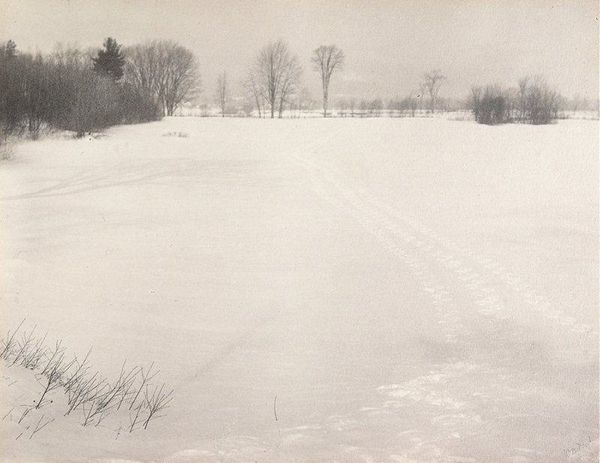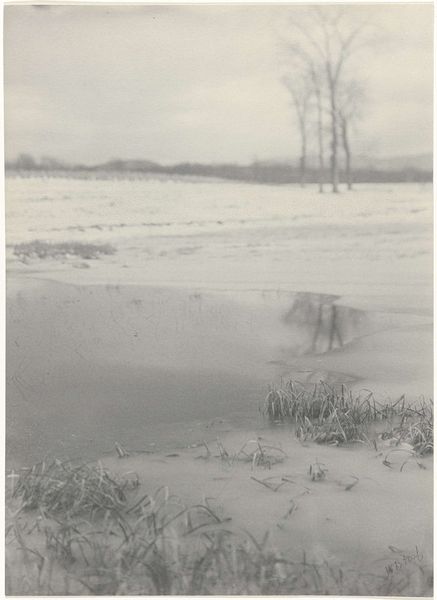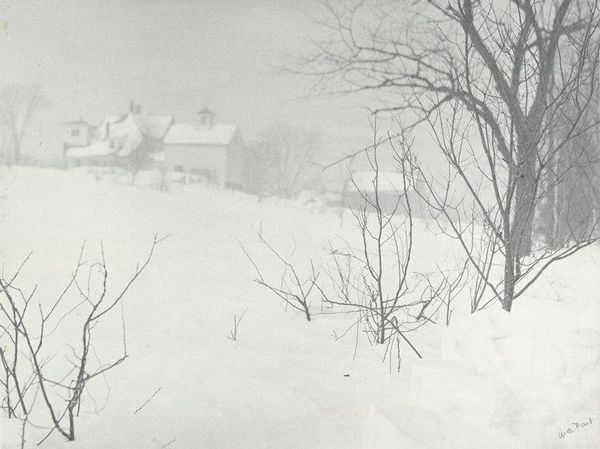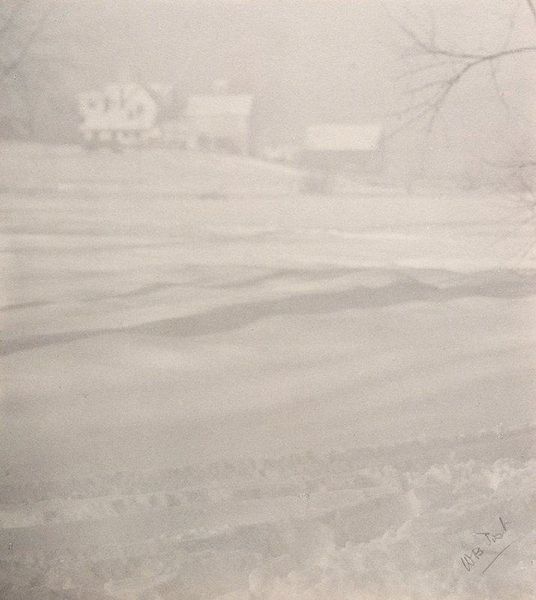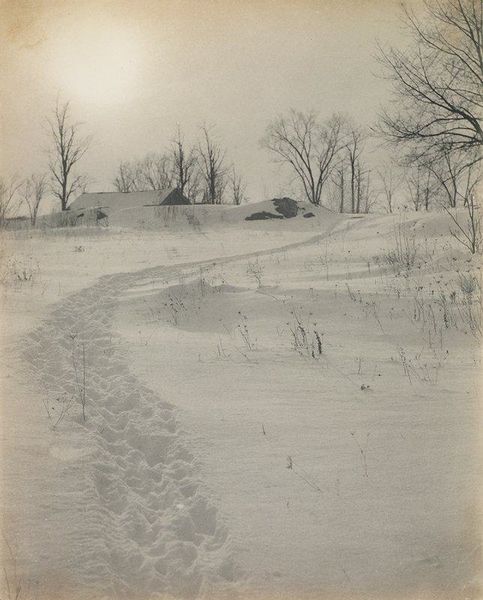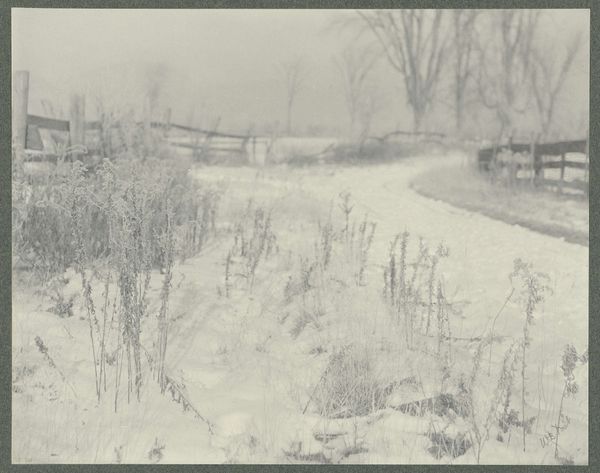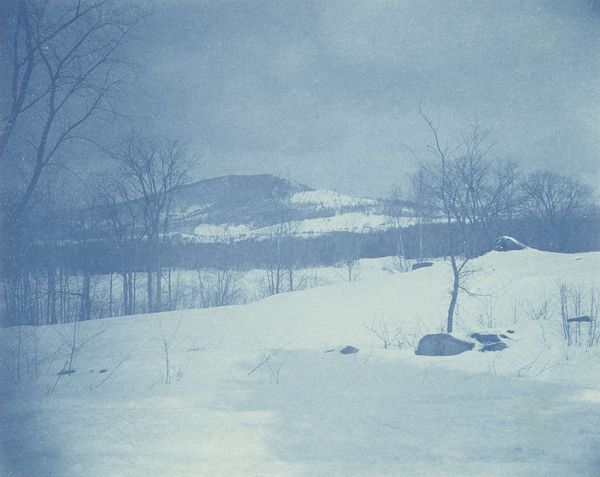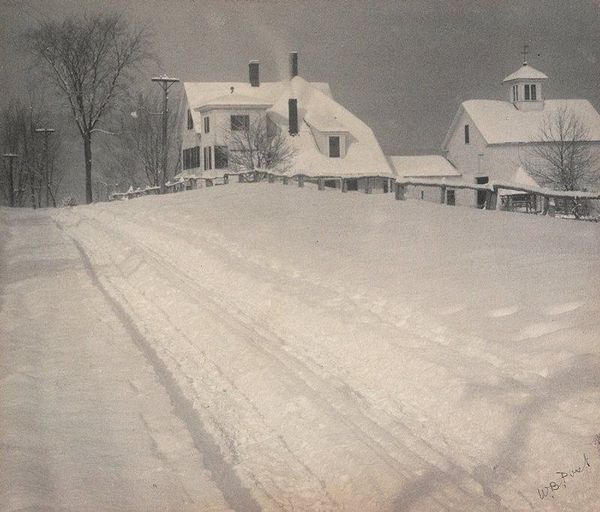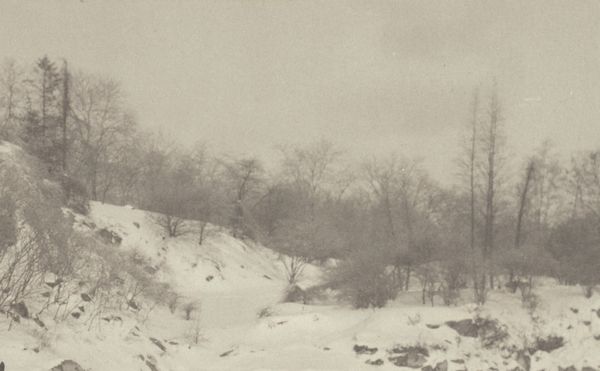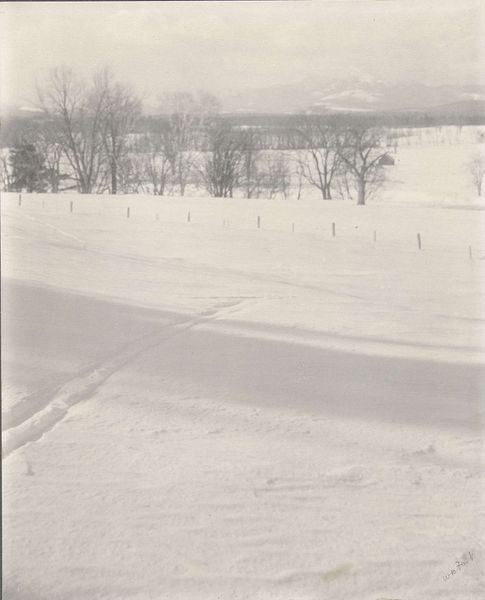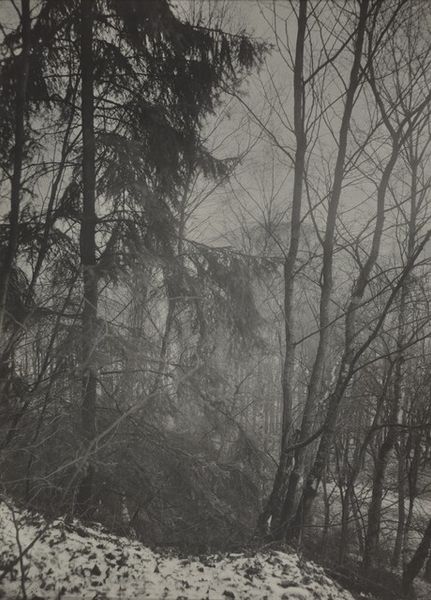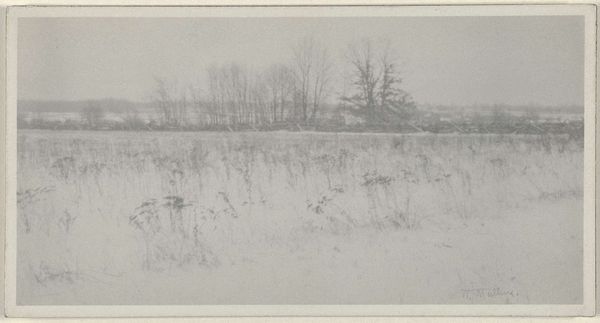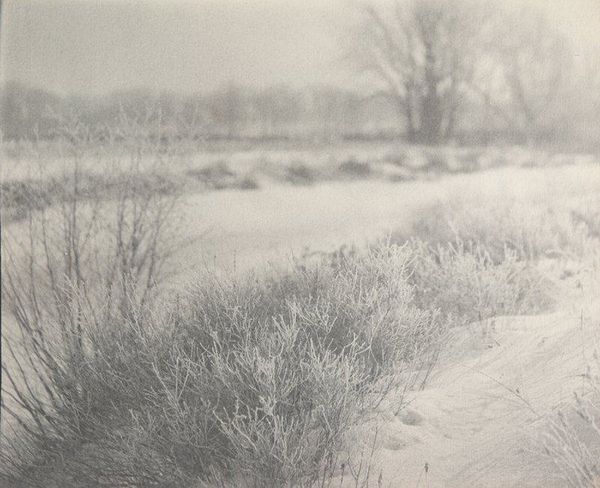
photogravure, photography
#
photogravure
#
black and white photography
#
pictorialism
#
landscape
#
photography
#
monochrome photography
#
united-states
#
monochrome
#
monochrome
Dimensions: 5 1/16 x 6 9/16 in. (12.86 x 16.67 cm) (image)7 3/4 x 10 11/16 in. (19.69 x 27.15 cm) (sheet)
Copyright: No Copyright - United States
Editor: We're looking at "Intervale," a photogravure by William B. Post, created in 1901. It’s mostly monochrome, and my immediate feeling is of vast stillness. It's quite empty; mostly a snow-covered field. What do you see in this piece, considered through a historical lens? Curator: I see this as a commentary on the rapidly changing American landscape at the turn of the century. Pictorialism, the style Post worked in, often romanticized rural scenes, offering an escape from industrialization and urban growth. Editor: So, this isn’t just a pretty picture of snow; it’s a statement? Curator: Precisely. The vastness you mentioned, that emptiness, can be read as both beautiful and isolating. Consider the social context: urbanization was drawing people away from rural life. Images like this perpetuated an idealized version of it, a carefully constructed myth that often obscured the realities of agrarian life. Notice the small footprints in the snow. Who do you imagine made them and why might this detail be important? Editor: Maybe it emphasizes how even this "untouched" landscape is, in fact, touched by humans? And potentially owned? It disrupts that myth you mentioned of a truly 'empty' or 'free' place? Curator: Exactly. Pictorialism was heavily mediated, participating in—and shaping—cultural narratives. Its reception also depended on institutional support through exhibitions and publications. We should consider how photography was being validated as fine art in institutions at this time. Editor: So even the style itself is part of this larger conversation about art and culture in a changing society? It is an intentional promotion, with political roots and artistic impact! Curator: Indeed. Analyzing art as a part of social history helps to see such works as less about nature and more about culture. Editor: That gives me a lot to consider about photography's role back then. I won't look at Pictorialism the same way!
Comments
No comments
Be the first to comment and join the conversation on the ultimate creative platform.
